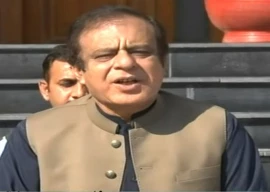
On November 3rd, 2016, residents of Lahore opened their eyes to a hazy morning of what was a characteristic November day with semi-cold air having the reminiscence of upcoming biting winters. But there seemed to be more under the fold, moving insidiously, and all the senses subconsciously vouched for it when they started to react negatively to that seemingly harmless fog. Itchy eyes, running nose, burning throat, all pointed to a devil and it was found in the details.
In the meanwhile, reports started to flush in that Lahore just witnessed its first episode of smog. During that week, nobody really cared about the elevated infrastructures and polished asphalted roads, in fact, it all came down to breathing a fresh breath of air.
For a change, let’s not beat the old drums. Let’s not rant about provincial government’s fetish with asphalt, iron and concrete. Let’s not talk about 1,700 trees being torn down in Lahore in the last two years. Let’s not talk about development at the cost of green belts. Instead, let’s talk about development without damaging the existing green belts. Let’s talk about maximising the utility of piddling little green space the city is left with and the possible ways to save it without much antagonising the developmentalists.
Lahore is reported to have three per cent green cover in contrast to a global requirement of 20 per cent, and even that is abating fast in number, as well in effectiveness due to poor planning and focus. The Parks and Horticulture Authority (PHA) is the premier institution that controls parks and plantations in Lahore and its utilisation of those rare green belts has been horrendous. Most of its undertakings have been associated with ‘beautifying’ the city. The shiniest feather in the PHA’s cap is the topiaries project. As if lining the peripheries of posh areas with these ornamental pieces was not enough, they have opened up a dedicated space in the name of Topiary garden, that displays carcasses of flowers and trees shaped into animals, birds, insects and what not. I am not particularly against beautification, but when a thirsty person has just one glass of water available, she does not use it to wash her face.
Secondly, when the fully grown trees are cut down for ‘development’, promises are made to not only replace those trees but to plant a lot more to mitigate the transgression. Even if these promises are kept, and 10 trees are planted for every one cut down, the job is not even close to quarter-done because when matured trees are replaced with young saplings, they take more than 10 years to be of the same utility and therefore, creating an ecological lag. So how can we keep the trees and still develop?
Other than planting saplings in already available green spaces, re-plantation of mature trees should also be done, which means transporting them to a new home instead of cutting them down at their throats. It is the least that authorities can do in the face of severe climate change crisis. And if heeded, this practice can actually help in maintaining existing three per cent green cover in the long run and also save 2,100 trees waiting for their ordeal as a result of the proposed elevated expressway from Gulberg to Motorway.
However, charity always begins at home. Therefore, let’s also talk about what we can do in our homes. Firstly, let’s minimise planting plants that give nothing more than pleasure to the eye. Secondly, be aware of the invasive alien species in the mix, and thirdly, realise the responsibility of not only providing oxygen for your own family but also for all those with whom you share the environment.
Therefore, the first thing that needs to be done to deal with adverse ecological anomalies is to secure what we have at present. All it will take is a redirected focus which will come as soon as we realise the fact that the earth is not locked in here with us, we are locked in here with her. So we probably should play nice to our captor and try to get along before we anger her irreversibly.
Published in The Express Tribune, May 22nd, 2017.
Like Opinion & Editorial on Facebook, follow @ETOpEd on Twitter to receive all updates on all our daily pieces.




































1713509570-0/Taylor-Swift-Album-Release-(1)1713509570-0-270x192.webp)




















COMMENTS
Comments are moderated and generally will be posted if they are on-topic and not abusive.
For more information, please see our Comments FAQ